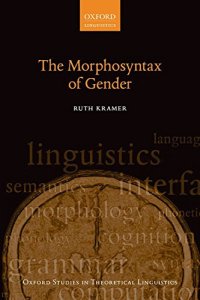
Ebook: The Morphosyntax of Gender
Author: Ruth T. Kramer
- Tags: Grammar Comparative and general, Gender, Grammar Comparative and general, Morphosyntax, Amharic language, Gender, Genus, Morphosyntax
- Series: Oxford Studies in Theoretical Linguistics 58
- Year: 2015
- Publisher: Oxford University Press
- City: Oxford
- Edition: 1st
- Language: English
- pdf
This book presents a new cross-linguistic analysis of gender and its effects on morphosyntax. It addresses questions including the syntactic location of gender features; the role of natural gender; and the relationship between syntactic gender features and the morphological realization of gender. Ruth Kramer argues that gender features are syntactically located on the n head ('little n'), which serves to nominalize category-neutral roots. Those gender features are either interpretable, as in the case of natural gender, or uninterpretable, like the gender of an inanimate noun in Spanish. Adopting Distributed Morphology, the book lays out how the gender features on n map onto the gender features relevant for morphological exponence.
The analysis is supported by an in-depth case study of Amharic, which poses challenges for previous gender analyses and provides clear support for gender on n. The proposals generate a typology of two- and three-gender systems, with the various types illustrated using data from a genetically diverse set of languages. Finally, further evidence for gender being on n is provided from case studies of Somali and Romanian, as well as from the relationship between gender and other linguistic phenomena including derived nouns and declension class. Overall, the book provides one of the first large-scale, cross-linguistically-oriented, theoretical approaches to the morphosyntax of gender.
The analysis is supported by an in-depth case study of Amharic, which poses challenges for previous gender analyses and provides clear support for gender on n. The proposals generate a typology of two- and three-gender systems, with the various types illustrated using data from a genetically diverse set of languages. Finally, further evidence for gender being on n is provided from case studies of Somali and Romanian, as well as from the relationship between gender and other linguistic phenomena including derived nouns and declension class. Overall, the book provides one of the first large-scale, cross-linguistically-oriented, theoretical approaches to the morphosyntax of gender.
Download the book The Morphosyntax of Gender for free or read online
Continue reading on any device:

Last viewed books
Related books
{related-news}
Comments (0)